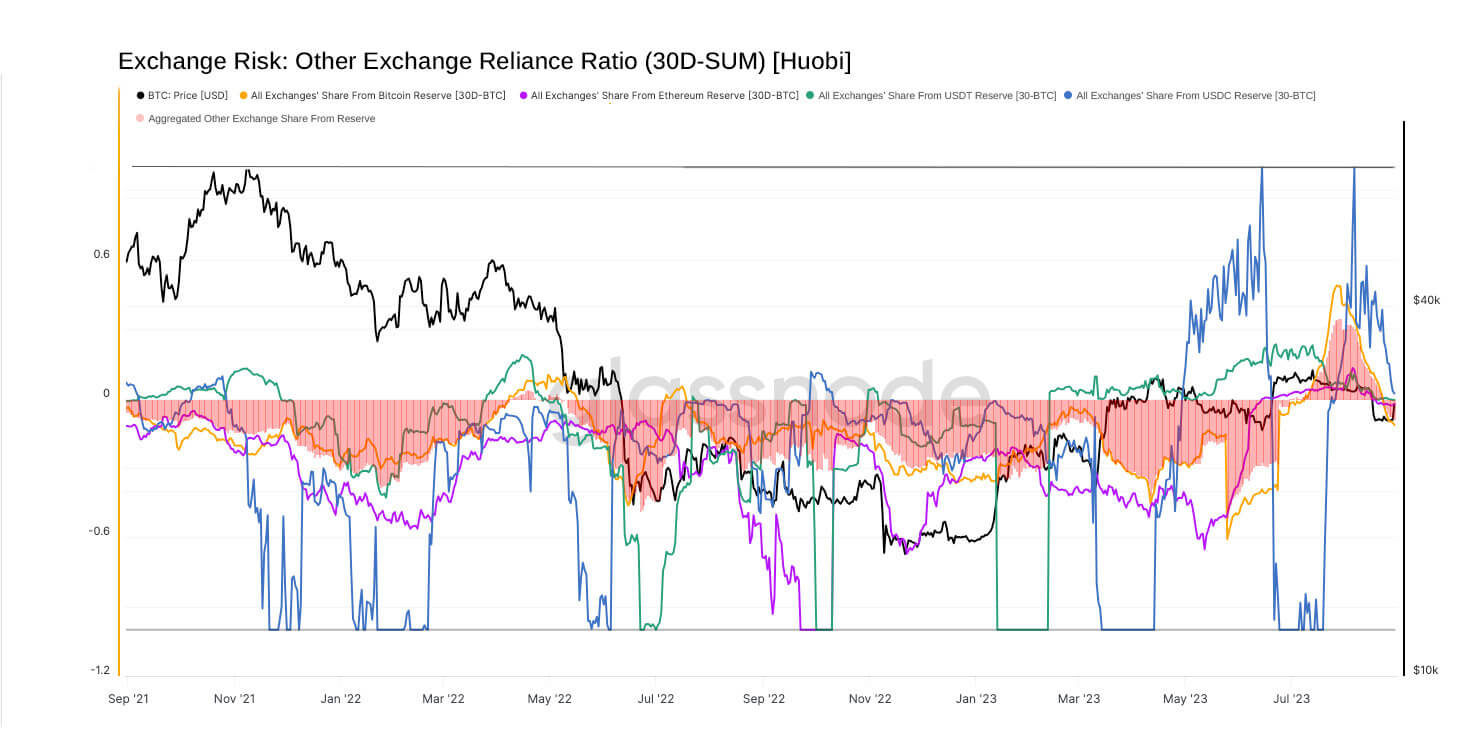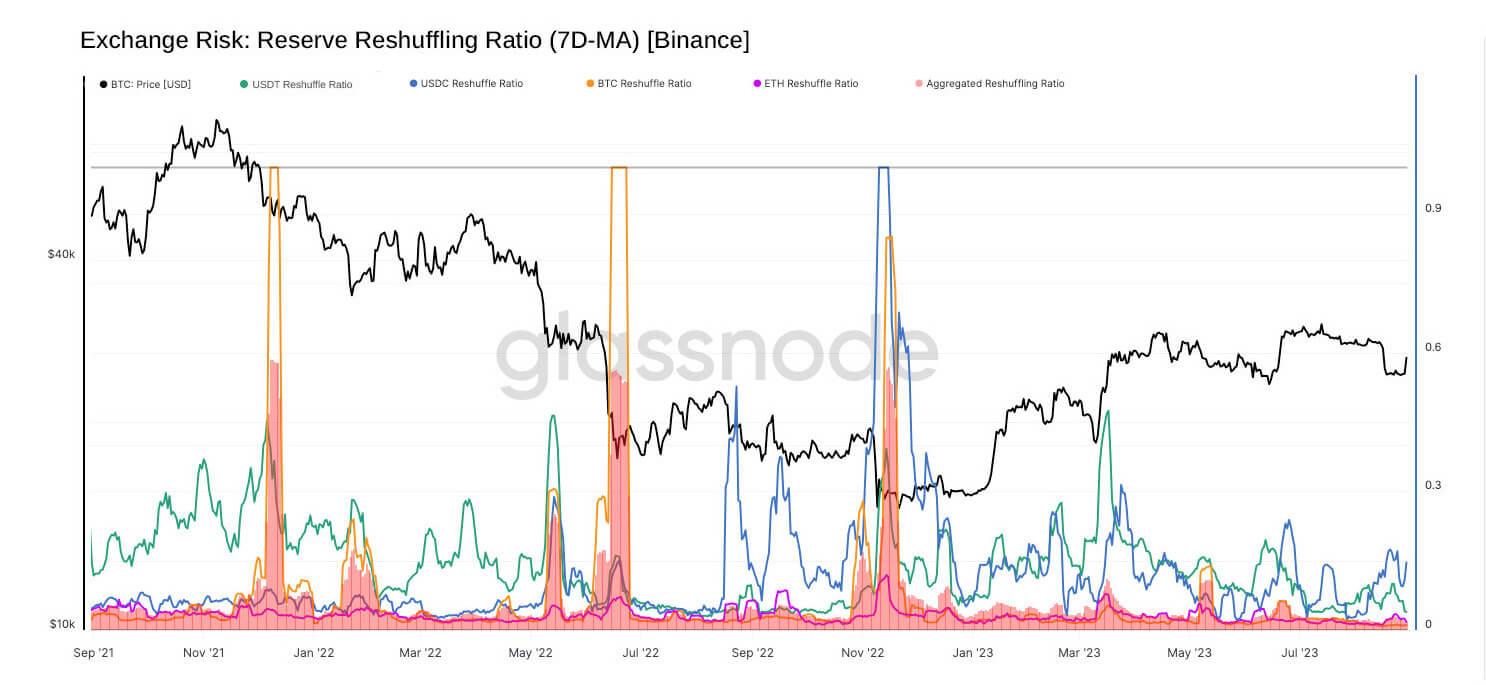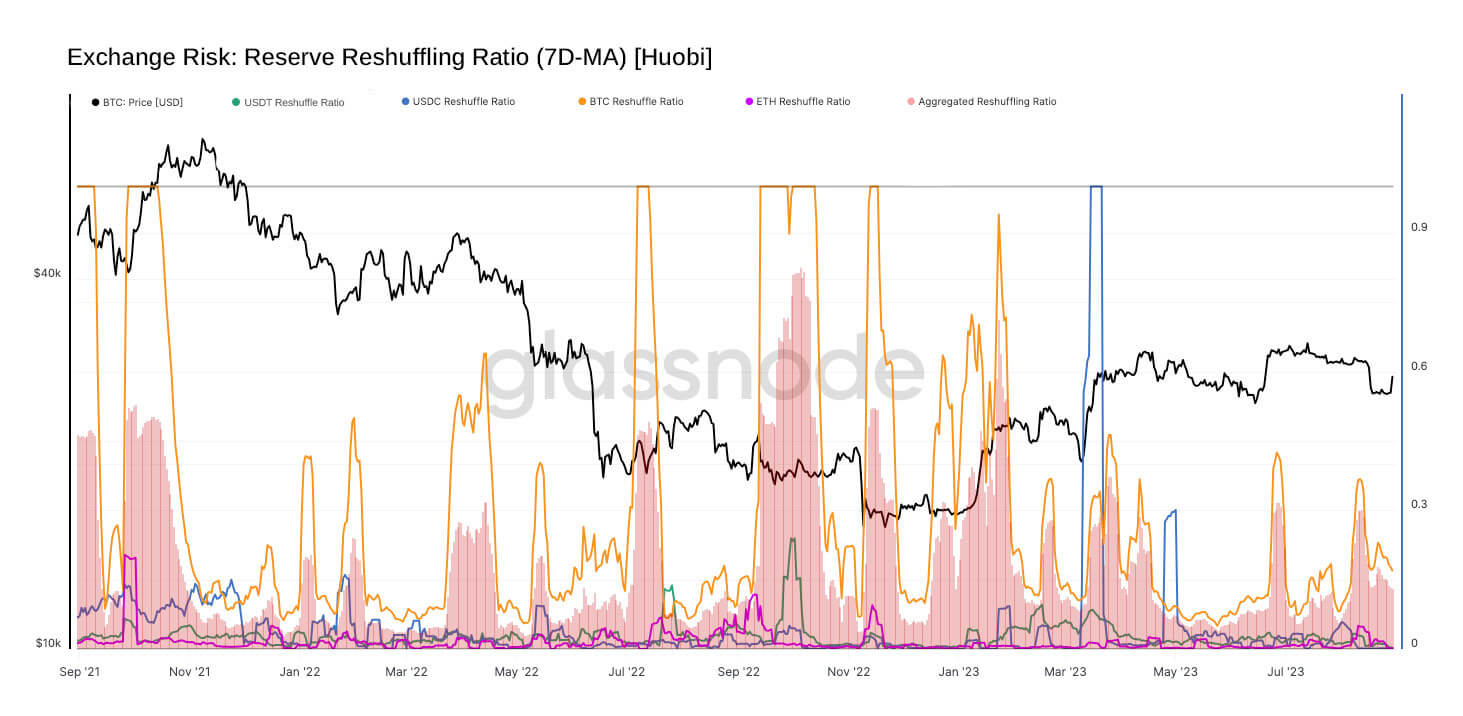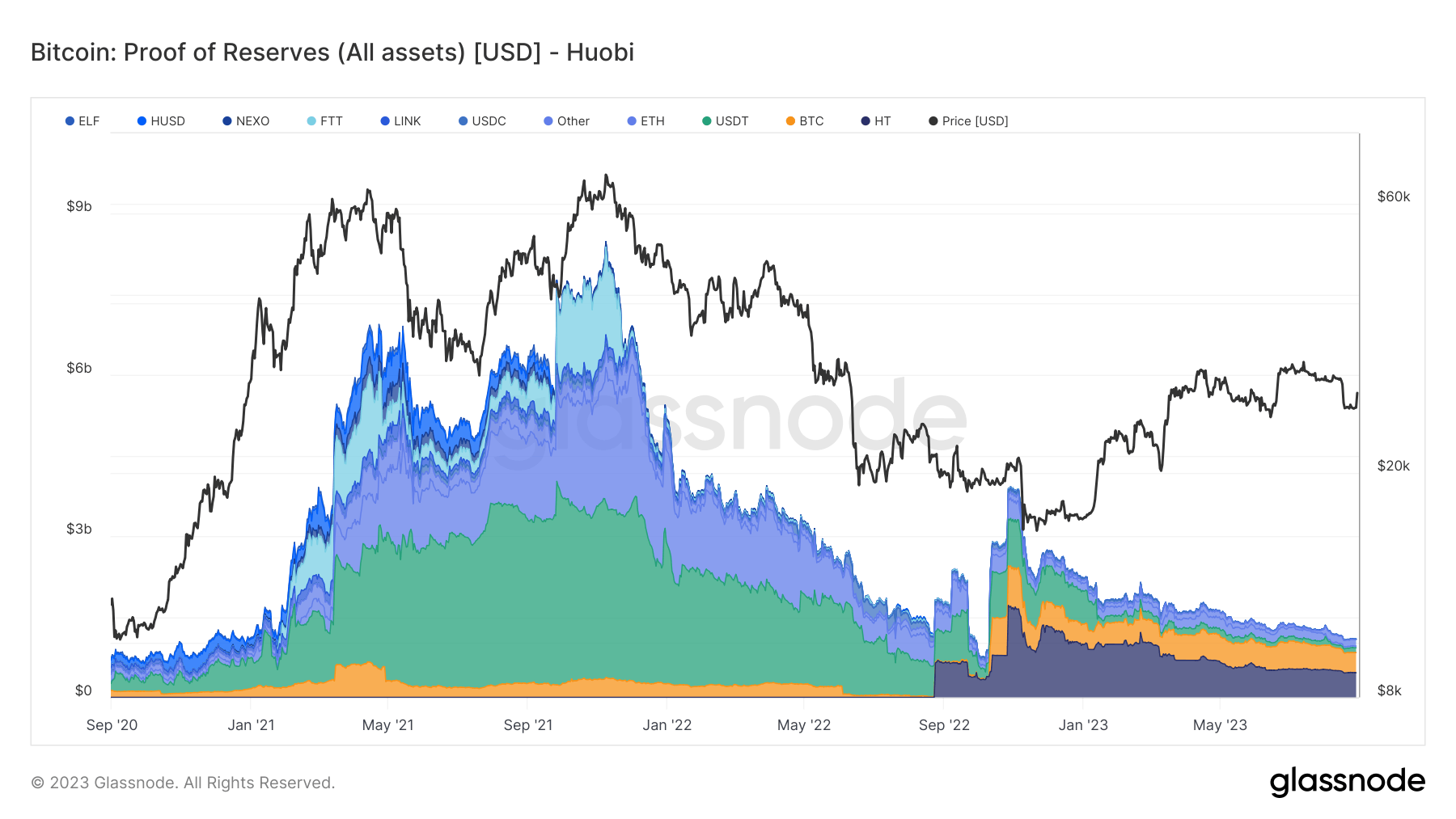The demise of FTX has underlined the counterparty risks exchanges can impose on the market. With traders and investors becoming increasingly cautious, there is a clear demand for reliable statistics to evaluate the health of these platforms.
Using the FTX dataset as a benchmark, Glassnode rolled out three innovative indicators designed to identify high-risk scenarios on the major exchanges: Coinbase, Binance, Huobi, and the now-defunct FTX.
One of the indicators is the currency dependency ratio, which indicates when a significant portion of an exchange’s balance is regularly transferred to or from another exchange. If a significant portion of an exchange’s balance moves consistently to or from another platform, this may indicate a deep reliance on liquidity.
A positive ratio indicates net inflows to the stock market, while a negative ratio indicates net outflows. Prolonged periods of large negative readings can be an alarm signal, indicating that assets are rapidly exiting the market in favor of another platform.
While Binance and Coinbase show relatively low dependency ratios, indicating small fund movements compared to their huge balances, Huobi’s data paints a different picture. Recent figures showed markedly negative dependency ratios for all Huobi assets, indicating a marked increase in transfers from Huobi to other exchanges.

Huobi’s internal rebalancing ratio, which represents the portion of an exchange’s balance traded internally over a given period, mirrors Binance’s.


However, context is crucial here. Binance, the largest and most popular exchange in the market, dwarfs Huobi in every way. Thus, the rearrangement peaks observed at Huobi may be magnified due to its depleting reserves.

This relationship between declining reserves and markedly negative dependency ratios could be a cause for concern. It suggests that assets are being moved internally with greater frequency and are being transferred from Huobi at an increasingly rapid pace.
The correlation between Huobi’s dwindling reserves and significant negative dependency ratios could indicate that confidence in the platform is waning. Although these figures do not definitively label a stock market as risky, the coming months will show whether these indicators are anomalies or precursors of a more profound shift.
The report that Huobi saw increased outflow to competitors according to new dependency metrics first appeared on CryptoSlate.

